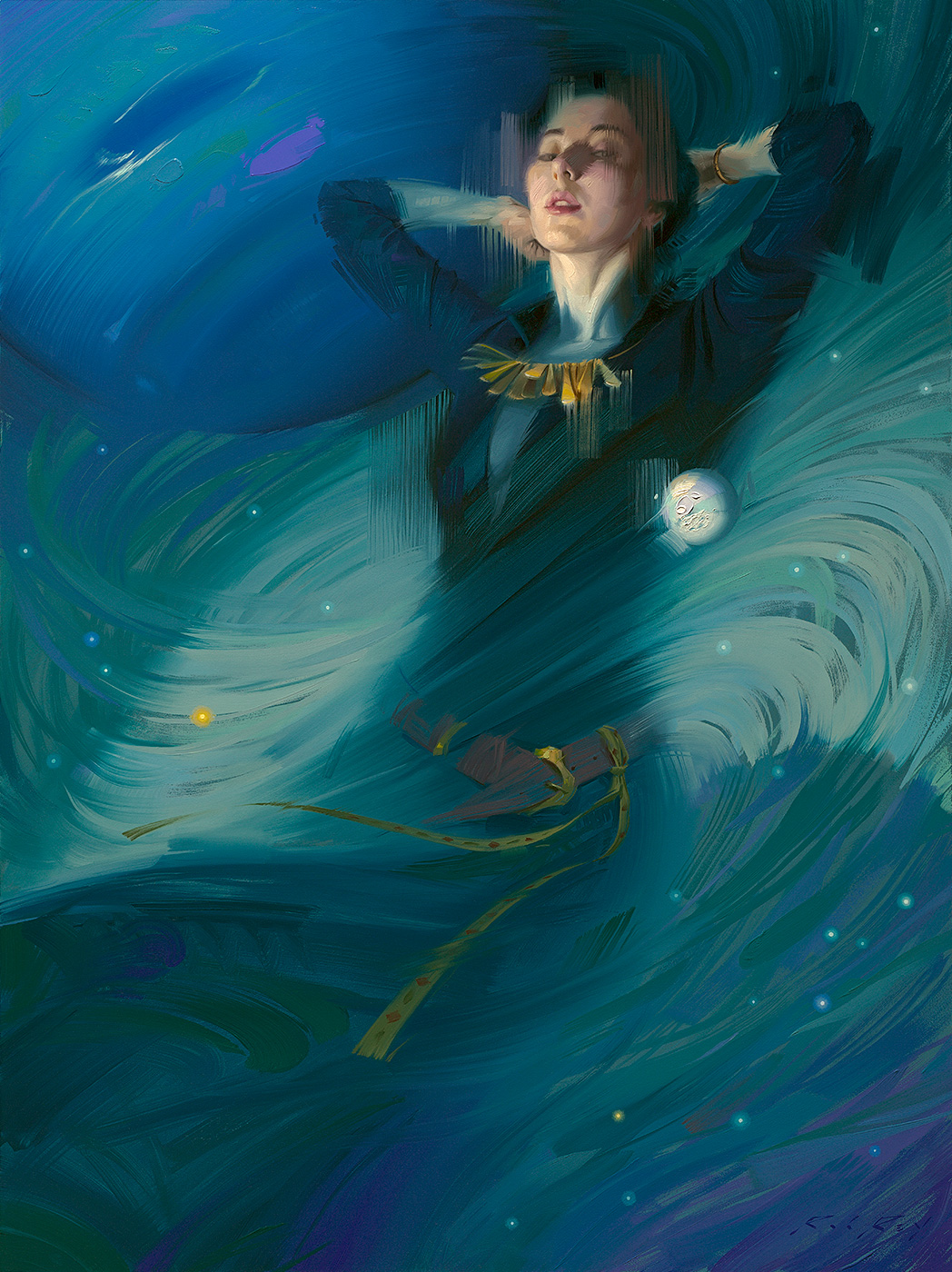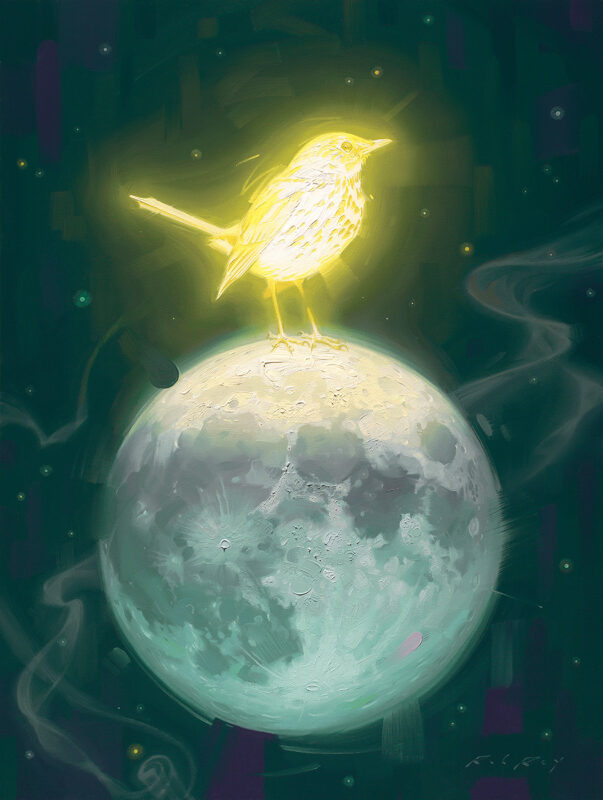
The Winds of Neptune
| Artist: | Rob Rey |
| Size: | 24 x 18 in |
| Medium: | Oil on panel |
| Price: | $3,400 |
Description
The most distant planet in our solar system experiences the strongest sustained winds - up to 1,300 miles per hour - over eight times faster than the winds of a Category 5 hurricane. Its largest moon, Triton, hosts the coldest known surface temperature: just 38 Kelvin (or -391°F). Its surface is coated in frozen nitrogen - colder than the liquid nitrogen you may have experienced in science class. If we were to visit either world, we would have a hard time breathing, among other problems, because at these temperatures even oxygen freezes to snow.Here on Earth, with our comfortably balanced atmosphere, we don’t typically experience the kinds of extremes that can be found elsewhere in the solar system, so we have a hard time imagining what’s possible. Learning about the solar system opens our eyes to these possibilities. For example, Venus - once similar to Earth - has a runaway greenhouse effect that pushes surface temperatures above 850°F, hot enough to melt lead.
Climate change on Earth shouldn’t take us to Venus-like extremes, but we can’t be sure how feedback loops - like melting permafrost or shrinking arctic ice - might exacerbate warming. We don’t need lead-melting heat to face serious consequences to our food supply and ecosystems.










